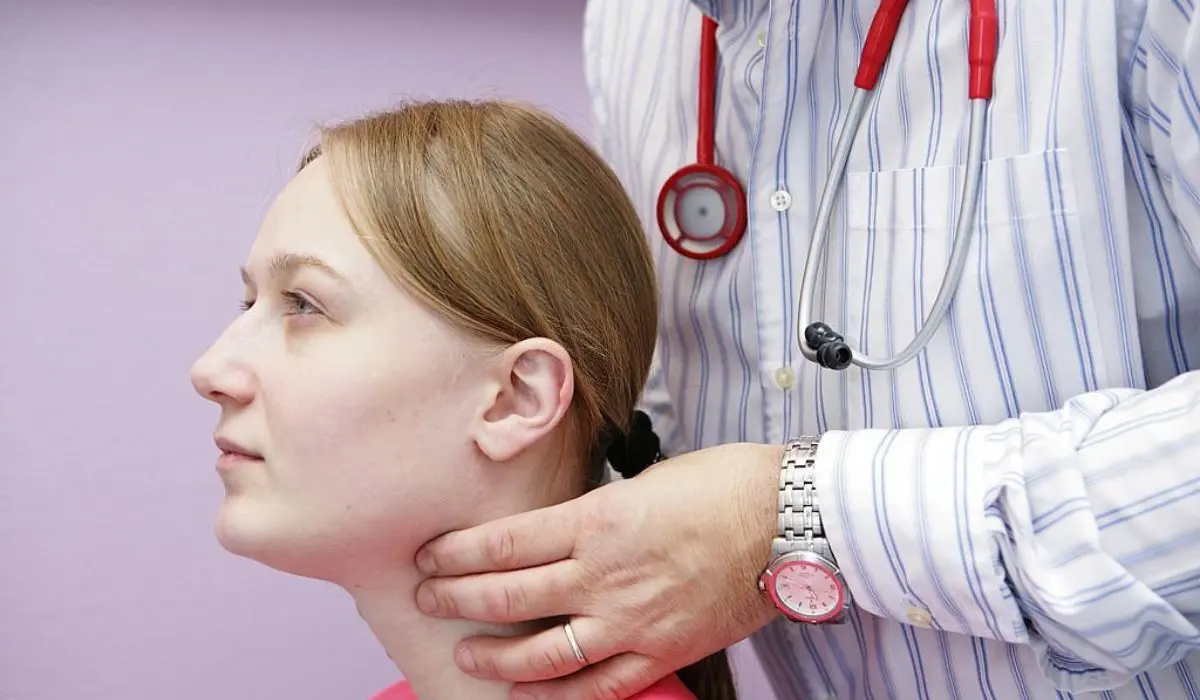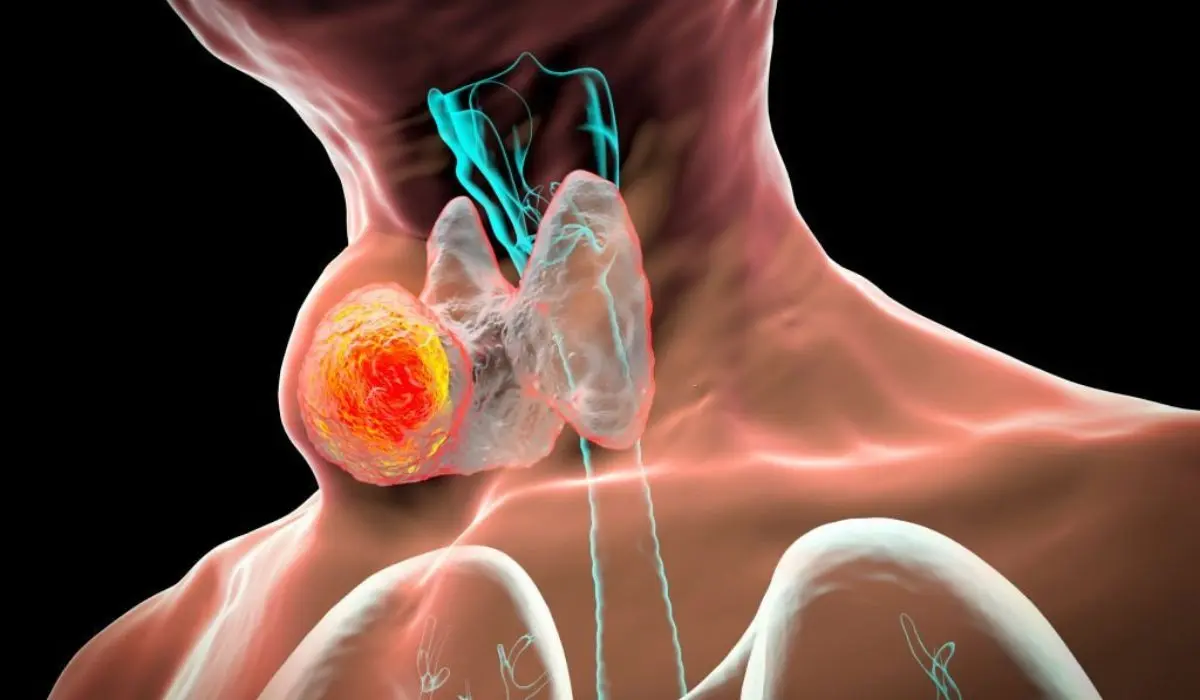Health
Thyroid Gland: Anatomy, Function, And Treatment

The thyroid gland located in the neck has an incredible role to play in regulating our body’s functions. This article will give you insights into the anatomy and function of the mighty yet small gland. Plus, we’ll provide info on how to manage thyroid-related conditions.
To comprehend the complexities of the thyroid, let’s delve into its anatomy and function. It’s a butterfly-shaped organ, with two lobes connected by a thin strip called the isthmus. It primarily produces hormones that control metabolism, growth, and development. These hormones influence all the cells of our body and are critical for our overall health.
Hypothyroidism is a condition where the gland isn’t producing enough hormones. This can lead to fatigue, weight gain, and depression. Hyperthyroidism is when there’s an excess production of thyroid hormones, causing weight loss, irritability, and a rapid heart rate.
If you think you may have a thyroid disorder or have been diagnosed with one, it’s important to see a healthcare professional. They can conduct tests to check your hormone levels and suggest an appropriate treatment plan based on your needs.
Anatomy Of The Thyroid Gland
The thyroid gland is a small, butterfly-shaped organ in the neck. It helps regulate metabolism and energy levels. It consists of two lobes connected by an isthmus. It has a capsule protecting it from harm or infection.

The thyroid is well-supplied with blood vessels. This provides oxygen and nutrients to its cells. It produces two hormones – thyroxine (T4) and triiodothyronine (T3). These hormones have an impact on various organs and tissues in the body.
Thousands of tiny, spherical structures called follicles are in the thyroid. The follicles are filled with a jelly-like colloid. It contains proteins for hormone production. The walls of the follicles are called thyrocytes. They take up iodide ions from the blood to produce thyroid hormones.
To maintain good thyroid function, nutrition, and lifestyle choices are important. Eating iodine-rich food like seafood and seaweed supports adequate iodide for hormones. Reducing stress through methods like meditation or exercise helps prevent problems with hormone production.
The Function Of The Thyroid Gland
The thyroid gland is a butterfly-shaped organ located in the neck. It is important for regulating metabolism and energy. Without it, we can have fatigue, weight gain/loss, and even depression.
It produces two hormones: T3 and T4. These control how cells use calories for energy, and also help with growth and development.
Common Disorders Of The Thyroid Gland
To better understand common disorders of the thyroid gland, delve into the world of hyperthyroidism and hypothyroidism.
Discover the unique challenges and treatment options for each condition, gaining insight into their impact on the body’s overall functioning. Uncover the intricacies of these thyroid disorders and the potential solutions they present.
▪️ Hyperthyroidism
Hyperthyroidism can have a huge effect on the body. Unwanted weight loss and muscle weakness are just some of the consequences of an increased metabolic rate. Plus, it can cause elevated heart rate and palpitations as thyroid hormones act up.
Sleep is also affected, often leading to sleepless nights and restlessness. Sweating and heat intolerance can be common too. Mental health can suffer, with anxiety and mood swings not uncommon.
Left untreated, this condition can have long-term repercussions. These include bone loss and a higher risk of osteoporosis. In serious cases, a life-threatening irregular heart rhythm or thyrotoxic crisis may occur.
It’s important to get medical help straight away if you experience symptoms of hyperthyroidism. Early diagnosis and treatment can stop the situation from worsening, and enhance your quality of life.
Don’t be afraid to take action if you suspect something’s wrong. Ignoring the signs may mean missing out on treatments that could make a difference. Timely intervention is essential for successful management of hyperthyroidism. See your healthcare provider if you think your thyroid is not functioning properly.
▪️ Hypothyroidism
Hypothyroidism can cause some odd symptoms. You may feel cold all the time, or have a hard time losing weight. It can also lead to dry skin, hair loss, and muscle weakness.
A unique thing about hypothyroidism is that it can affect fertility. Women may have odd menstrual cycles, or trouble getting pregnant. If you are planning to have a baby, work with a doctor or read sites like fertilityfirstivf.com
Diagnosis Of Thyroid Disorders
To diagnose thyroid disorders, utilize physical examination and medical history, thyroid function tests, and imaging techniques. These sub-sections provide valuable solutions to understand the condition of your thyroid gland thoroughly.
Physical examination and medical history serve as initial assessments, while thyroid function tests and imaging techniques offer further insights into its functionality and structure.
▪️ Physical Examination and Medical History
A physical exam and detailed medical history are important for diagnosing thyroid disorders. These steps help healthcare professionals get info about the patient’s symptoms, risk factors, and health.
▪️ Thyroid Function Tests
The TSH (thyroid-stimulating hormone) test is a frequent one. It checks the amount of TSH in the blood, made by the pituitary gland. Abnormal levels show an overactive or underactive thyroid.
The T4 (thyroxine) test is essential. It measures the amount of this hormone produced by the thyroid. High or low T4 levels provide insight into thyroid function.
A T3 (triiodothyronine) test may also be done. It checks another hormone made by the thyroid gland. Unusual T3 levels may reveal particular thyroid disorders.
Furthermore, antibody tests may detect autoimmune diseases like Graves’ disease or Hashimoto’s thyroiditis.
To get accurate results, precautions must be taken. For instance, fasting a few hours before the test may be needed for accurate TSH measurements. It’s wise to tell your doctor about any medications you take before these tests, as some can interfere with the results.
▪️ Imaging Techniques
Imaging techniques are very important for diagnosing thyroid problems. Doctors use advanced tech to get a precise view of the thyroid and the area around it. This helps them to understand its size, shape, and any issues that may be present.
Ultrasound is one common imaging option. It uses sound waves to make images of the thyroid. This can help them find nodules, cysts, and other growths. It also helps them tell the difference between benign and cancerous nodules.
CT scans are another way to image the thyroid. This uses X-rays plus computers to give cross-sectional images. This is great for looking at larger tumors or seeing if cancer has spread to nearby lymph nodes.
MRI is also great for diagnosing thyroid disorders. It uses radio waves and a powerful magnet to get detailed pictures. This helps to characterize tissue and tell different types of thyroid cancer apart.
Treatment Options for Thyroid Disorders
To address thyroid disorders effectively, explore viable treatment options like medications, radioactive iodine therapy, and surgery.
Medications, radioactive iodine therapy, and surgery offer distinct solutions for managing thyroid disorders, catering to diverse medical needs and preferences. Each sub-section will navigate through the benefits and considerations of these treatment approaches.
▪️ Medications
Treatments for thyroid disorders come in many forms. Hypothyroidism often requires synthetic thyroid hormone replacement therapy. This supplies the body with the hormones it needs to keep metabolism, energy, and temperature in check.
▪️ Radioactive Iodine Therapy
Radioactive iodine therapy is used to target and destroy overactive thyroid cells. It is an effective treatment for hyperthyroidism and certain types of thyroid cancer.
A small dose of radioactive iodine is taken orally. This is absorbed by the overactive cells, which then die off. Healthy tissues remain unaffected.
This therapy is special because it can treat both macroscopic and microscopic diseases. It can eradicate recurrent active tissue after surgery or other forms of therapy.
▪️ Surgery
Surgery is a treatment option when other treatments have not worked. It may be used for cancer, big goiters, or hyperthyroidism. There are two main operations – partial thyroidectomy (part of the gland removed) and total thyroidectomy (all taken out).
Surgery can cause issues such as bleeding, infection, and damage to close by parts. Nerve damage is also possible, which may cause voice problems or difficulty swallowing. Hospitalization is generally needed and recovery time varies.
Conclusion
The thyroid gland is super important for overall body health and function. We explored its anatomy and how it works. Knowing about this tiny but mighty gland helps people manage thyroid-related issues.
The thyroid gland creates hormones that control metabolism, growth, and development. Dysfunction of the thyroid can cause hypothyroidism or hyperthyroidism. Symptoms include weight changes, tiredness, mood shifts, and irregular menstrual cycles.
Treatment for thyroid-related disorders may include medication, surgery, or radioactive iodine therapy. Treatment depends on the condition and its severity. Regular monitoring and follow-up appointments are essential for successful treatment.
